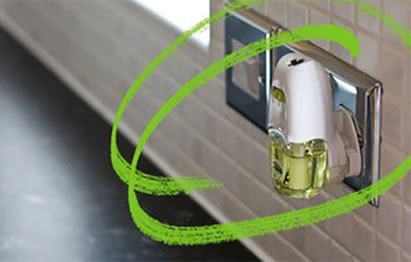 With time we have made our homes our castles, at least that’s what we think, because the times have change radically and now there are more dangers in our homes than outside of them. There is quite lot information shared on the internet about the infamous formaldehyde, methylene and chloride nitrobenzene – all carcinogens that can be found in everyday items such as dyes, shampoos, rubber, plastic, perfumes.
With time we have made our homes our castles, at least that’s what we think, because the times have change radically and now there are more dangers in our homes than outside of them. There is quite lot information shared on the internet about the infamous formaldehyde, methylene and chloride nitrobenzene – all carcinogens that can be found in everyday items such as dyes, shampoos, rubber, plastic, perfumes.
Here we have few of the things that you thought were completely safe and they will turn out to be health problems provokers Then make sure you take the right decision and get rid of the many cancer – causers from you home and ensure a healthy environment for you and especially your family.
1. Art supplies
Certain art supplies like rubber cement glues and Epoxy, acrylic solvents and paints, and permanent markers contain chemicals linked to organ damage, cancer and allergies.
Children are especially vulnerable to toxins because of their immature immune systems and higher metabolisms, so you should pay extra attention on the products they use.
2. Antiperspirants
Most conventional antiperspirants and deodorants contain several ingredients linked to virulent cancers. Since antiperspirants and deodorants are designed to stay on our bodies for hours, this allows the potential harmful chemicals to get deep under the skin. After a little research on the internet, we completely stopped using antiperspirants, and started making our own natural homemade one.
3. Air fresheners
Many air fresheners have volatile organic compounds, toxins and carcinogens such as phthalate esters in their formulas. A Natural Resources Defense Council (NRDC) released a study of the 13 common household air fresheners, which found that most of the surveyed products contain chemicals that can affect reproductive development and aggravate asthma.
According to Anne Steinemann of the University of Washington, and her study in 2008, all air – fresheners tested gave off chemicals regulated as hazardous or toxic under federal laws, including carcinogens with no safe exposure level. However, none of these chemicals were listed on the product labels or Material Safety Data Sheets. Try natural fragrances from essential oils, as a replacement.
4. Shower curtains
Plastic shower curtains leach toxic chemicals not only into your bath or shower, but also into the environment, emitting harmful chemicals called VOC’s or volatile organic chemicals
In addition to conventional cleaners, reducing your contact with any of these products will surely make your home your castle.
5. Candles
U.S. Consumer Product Safety Commission (CPSC), conducted a study which confirmed that 40 percent of candles on the market contain lead wires inside their wicks. Scented candles most commonly contain lead wicks. The manufacturers use lead to make the wicks firmer, because fragrance oils soften the wax.
According to the CPSC: A candle with a lead – core wick releases five times the amount of lead considered hazardous for children, and exceeds the Environmental Protection Agency (EPA) pollution standards for outdoor air. Exposure to high amounts of lead may contribute to learning disabilities, hormone disruption, behavioral problems and many other health problems.
If you want to keep your home cozy and softly lit without risking your health choose beeswax candles with cotton wicks.
6. Shampoos
We know how it may sound, but conventional shampoos have too many toxic ingredients. Their effects are still being researched, and there is no scientific consensus whether they cause cancer. But, you can use any of the myriad of handmade shampoo bars, if you want to be on the safe side.
Source ~ Green yatra
Health Inspirations – Tips – For Healthy Life – Take care of you Body. It is the only place you live
<<<< In pursuit of a Healthy Life ~ Welcome Home >>>>





